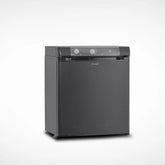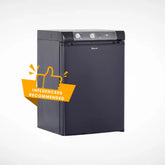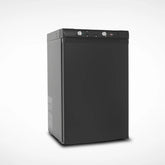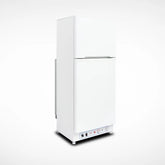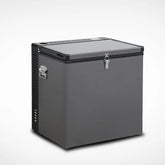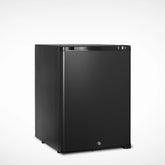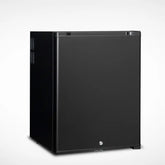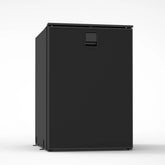How to prolong the lifespan of RV gas refrigeration equipment
If you want to travel by car or live an RV life, then gas refrigeration equipment such as gas refrigerators and gas freezers are essential. Because they can not only use the onboard 12V power supply but also use LPG as an energy source, making your RV life more comfortable. If you haven't found a satisfactory gas refrigerator, you can take a look at SMAD which has been making gas refrigerators for many years. Additionally, to prolong the life of the product, there are also many things to be aware of when using and maintaining gas refrigeration equipment.
Be careful about where to use a refrigerator
Never install gas refrigeration equipment in a place with no ventilation. Gas refrigerators consume air (oxygen) when they run on gas power. Provide a fresh air opening of at least 3 sq. ft. (20 mm) when used in any interior area. When the oxygen content in the air is insufficient, it will not only lead to insufficient combustion of LPG and affect the cooling efficiency, but also may produce carbon monoxide and affect your health.
Never run electric and gas-powered at the same time. If you want to switch the energy supply mode, please stop the energy supply first. Just make sure to never run both heaters at the same time. Otherwise, the cooling unit will be seriously damaged.
Recommendations for the use of RV freezers
Separate cooked and raw foods when stored. Leave some space between foods to allow air to circulate. It is best not to put hot foods in the freezer until they have cooled naturally. It is best to pack the foods with peculiar smells with plastic membranes before storing them. Glass containers, canned beverages, eggs, and vegetables should not be placed in the freezer, as they may break when the freezer reaches temperatures below 0℃.
Regular defrosting: When the thickness of any ice layer in the refrigerator exceeds 3mm, it is necessary to defrost the refrigerator, otherwise the cooling system may be damaged. Remove all food and turn off the refrigerator. Place towels in the freezer and at the bottom of the refrigerator to absorb water. Insert a non-sharp object between the freezer door seal and the inner box. Please empty the drip tray after all ice has melted. After defrosting, the refrigerator must be thoroughly dried.
Maintenance of RV refrigerator during an idle time
Empty your RV refrigerator when it's idle, food that sits in the refrigerator for a long time can contaminate the refrigerator. After disconnecting and defrosting, clean the refrigerator with a soft cloth and warm detergent solution. Finally, wipe with a cloth and water, then a dry cloth. If there is a strong odor in the refrigerator that cannot be removed by washing, place a deodorant in the refrigerator.
Periodically inspect the gas hose for signs of cracks or deep abrasions. Connections can be tested for leaks with a soapy solution.
Cleaning the burner every 10 days. Take off the protective hood and do the following:
1. Clean the openings and the burner screen with a toothbrush;
2. Clean and inspect the electrode and thermocouple. If either is corroded, have it changed. Check that they are well attached and if necessary tighten the screws;
3. Check that the spark is created by pressing the electric piezo ignite button on the control panel.
4. Do not use thin objects to either clean or unblock the injector.
RV travel is a very romantic lifestyle, and gas refrigerator plays an important role in it. So knowing some tips for maintaining your gas refrigeration equipment can save you a lot of trouble. If you have other questions about gas refrigerators, you can refer to the article: All You Need to Know About a Gas Refrigerator.
